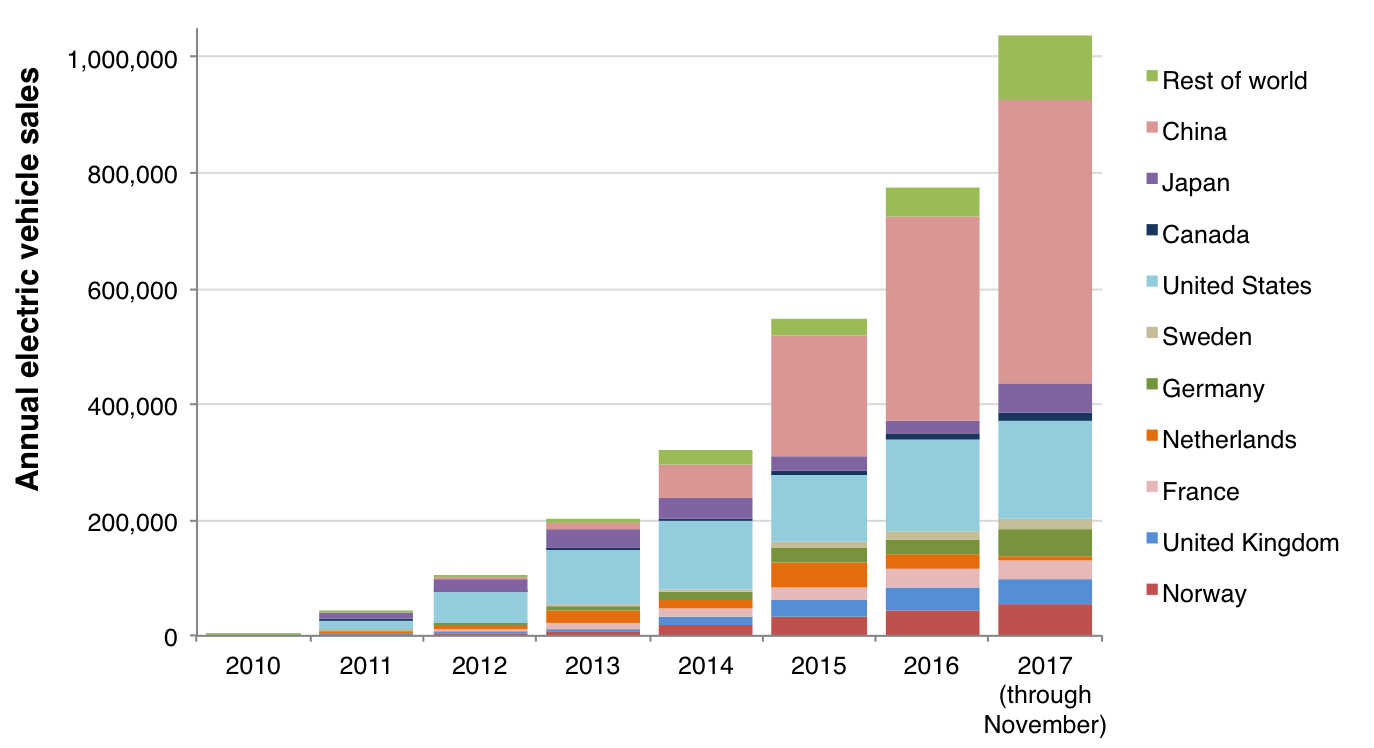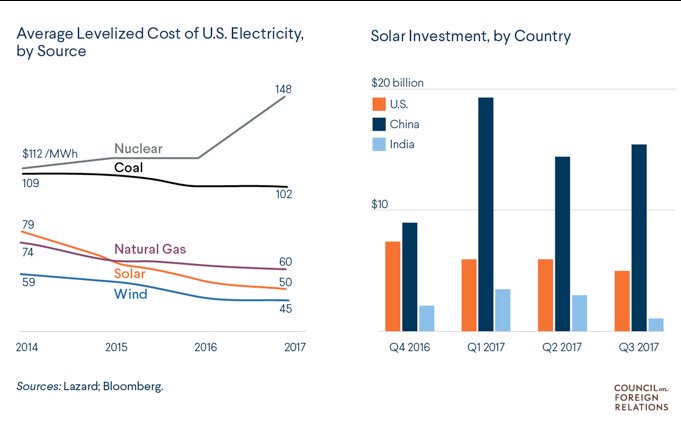With a rough 2017 on the environment now in the books, here are the top issues I plan to follow in 2018 on climate change:
- A possible boost for electric vehicles from new models and global demand: With the more affordable Tesla Model 3 finally trickling out, plus aggressive EV policies in countries like China, hopefully we will see continued increases in demand for electric vehicles. Here’s an interesting chart on EV adoption worldwide, illustrating in particular the pivotal role that China is playing:

- Impacts of potential oil price increase: OPEC nations have already decided to cut oil production, which could mean that prices will increase with less supply (perhaps even despite more pumping from the U.S. and Russia). If oil prices rise, gas prices will go up, possibly leading to more demand for electric vehicles and other fuel-efficient vehicles and a decrease in pollution.
- Renewable energy’s political headwinds and tax uncertainty, coupled with falling costs: The Trump administration is doing everything it can to boost coal and undercut renewables (particularly with likely tariffs coming on foreign solar panels). And the 2017 federal tax legislation creates uncertainty for wind and solar tax credit financing going forward. But the economics of renewables continues to defy expectations. Here’s a chart with some more details on the rapid progress made in the past few years, including just in 2017:

- More extreme weather & environmental challenges: 2017 was a doozy on extreme weather, with another record-breaking temperature year that included brutal wildfires and hurricanes like we’ve never seen. As the climate continues to warm, expect more of these events, with the potential for them to change the politics around climate. Special mention: the impact of Puerto Rican refugees on Florida politics.
- U.S. state action to fill the federal void on climate leadership: States (and many cities) are continuing to move aggressively on climate. Will we see more states join California’s cap-and-trade program or implement strong greenhouse gas emissions reduction targets, including carbon taxes? Will we see multi-state collaborations on climate? This year could provide some opportunities for state gains on climate leadership, particularly in states like Oregon and Washington, plus the continued possibility a regional western-wide grid to facilitate renewable deployment across the western U.S.
- 2018 mid-term elections: A Democratic takeover of at least the House, if not the Senate, would dramatically change the prospects for climate policy in the country. A Democratic House means the purse strings could swing back in favor of funding environmental measures, plus some congressional oversight on agency action (or inaction or worse, in the case of climate change). A Democratic Senate could in turn mean much more moderate judicial nominees who hear cases on agency decision-making on the environment.
Honorable mention: California housing policy. While 2017 was supposed be the “Year of Housing,” much more work remains to be done. Will California legislators finally start to rein in local control over land use, which has prevented sufficient infill housing in thriving metropolises from getting built? And relatedly, will California voters overturn in November the state’s new gas tax increase, which helps fund transit and road repair to serve infill housing?
Lots of interesting issues to follow this year. Thanks for reading this blog — I look forward to covering them all and more in 2018.


